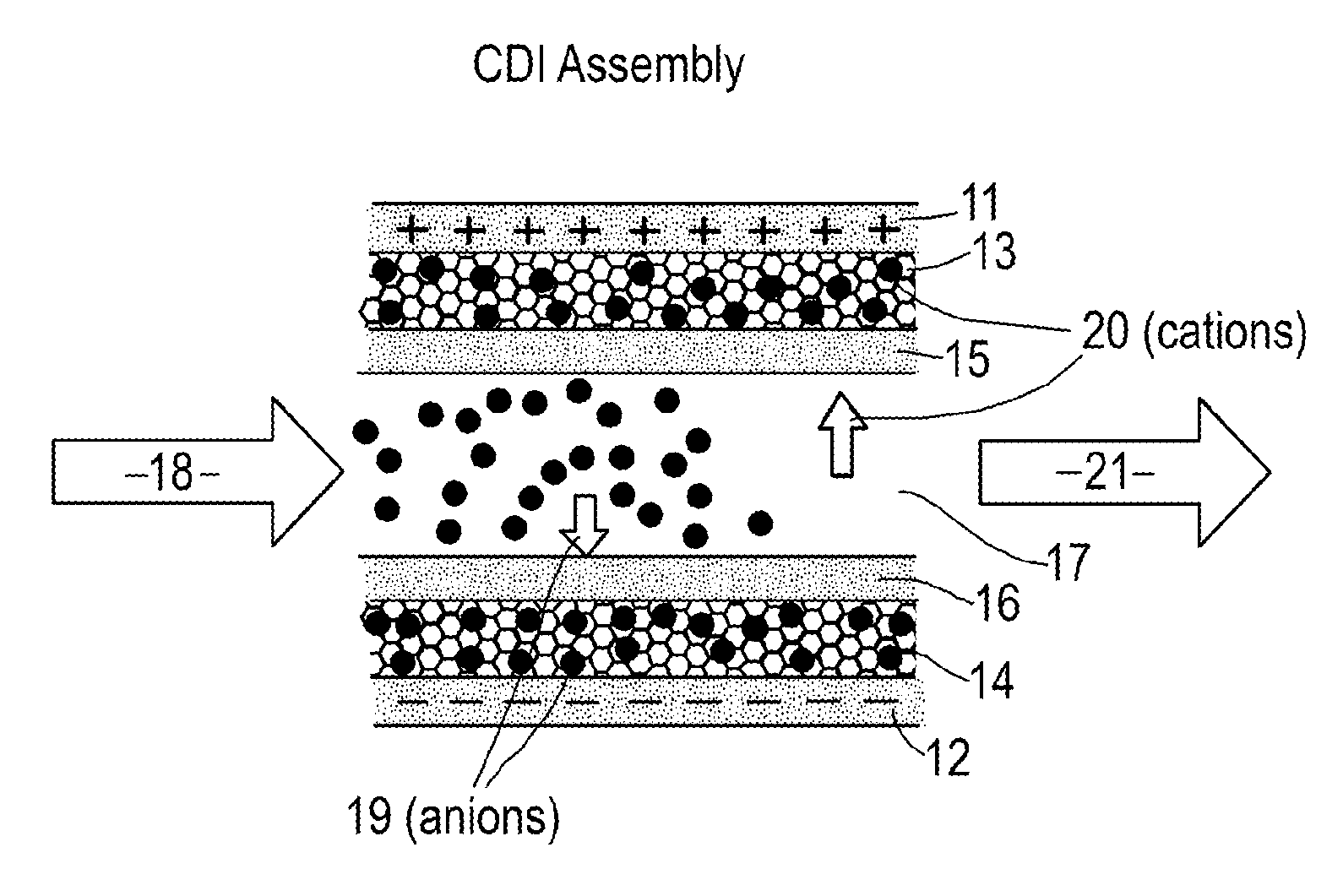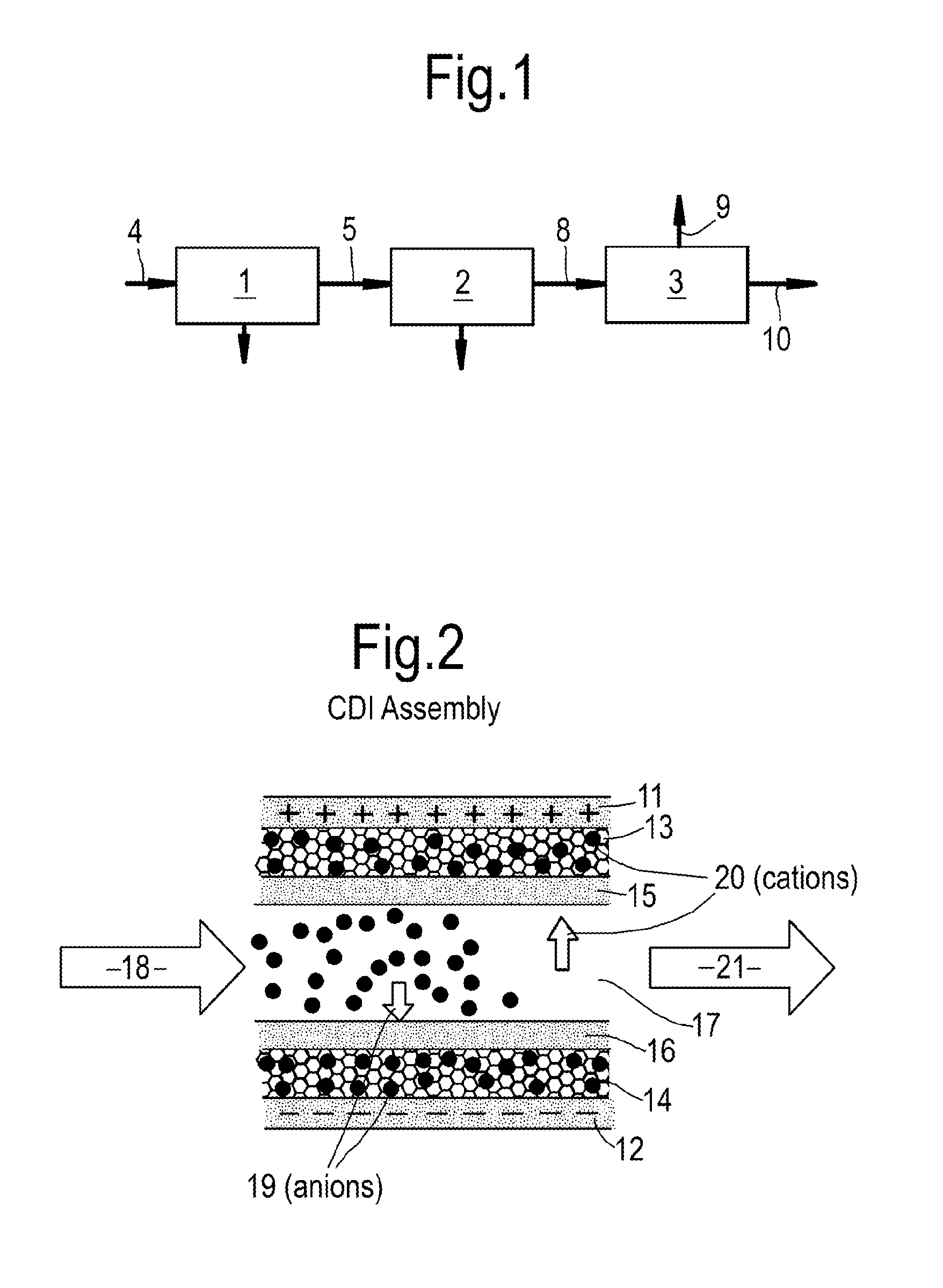Method and system for enhancing oil recovery (EOR) by injecting treated water into an oil bearing formation
a technology of oil bearing formation and treated water, which is applied in the direction of membranes, sealing/packing, and wellbore/well accessories, etc., can solve the problems of ro membranes being sensitive to fouling, affecting and too high purity of treated source water. achieve the effect of optimizing the efficiency and performance of n
- Summary
- Abstract
- Description
- Claims
- Application Information
AI Technical Summary
Benefits of technology
Problems solved by technology
Method used
Image
Examples
example
[0068]In this example three different processes for seawater desalination are compared, see table 1. In all three processes a pre-treatment step using a high-performance nanofiltration step is applied to produce a permeate which usually has a TDS equivalent to brackish water.
TABLE 1Comparison of three membrane processes forseawater desalinationStage 1Stage 2Process 1high-performanceBrackish water reversed osmosisnanofiltration(BWRO) membranesProcess 2high-performancehigh-performance nanofiltrationnanofiltrationProcess 3high-performanceCapacitive Deionisation (CDI)nanofiltration
[0069]Process 1 is a commonly applied method to produce potable water from seawater based on nano-filtration and reversed osmosis.
[0070]Process 2 is a known dual stage Nano Filtration (NF) seawater desalination system described in U.S. Pat. No. 7,144,511 by Diem Xuan Vuong. A disadvantage of this known dual stage NF process is its lower overall recovery rate compared to process 1.
[0071]Process 3 describes the ...
PUM
 Login to View More
Login to View More Abstract
Description
Claims
Application Information
 Login to View More
Login to View More - R&D
- Intellectual Property
- Life Sciences
- Materials
- Tech Scout
- Unparalleled Data Quality
- Higher Quality Content
- 60% Fewer Hallucinations
Browse by: Latest US Patents, China's latest patents, Technical Efficacy Thesaurus, Application Domain, Technology Topic, Popular Technical Reports.
© 2025 PatSnap. All rights reserved.Legal|Privacy policy|Modern Slavery Act Transparency Statement|Sitemap|About US| Contact US: help@patsnap.com


